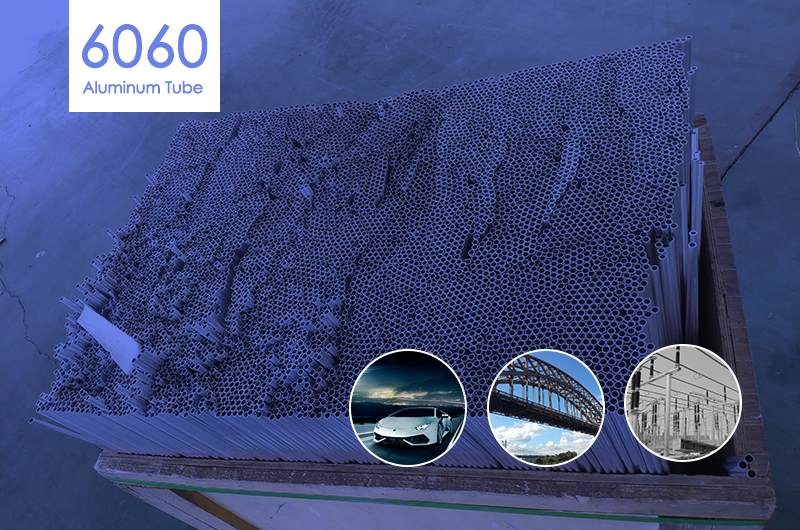6060 seamless aluminum tube belongs to Al-Mg-Si series alloy, which is characterized by medium strength, good plasticity, excellent weldability, corrosion resistance and cold workability, and is widely used in automobile, construction, electric power and other industries. The content of Mg and Si in 6060 aluminum alloy has a great influence on the strength. When the Mg content is constant, with the increase of Si content, the excess Si will increase the strength of the material after quenching and aging, but the elongation will decrease with the increase of Si content.

The sequence of aging desolubilization of 6060 alloy is α supersaturated solid solution→G. P region → β" phase → β' phase → β phase. In the early stage of aging, Mg and Si atoms gather on the crystal plane of the aluminum matrix to form a solute atom-enriched region, that is, the G.P region maintains a coherent relationship with the matrix, and the atoms on the boundary It is shared by the parent phase and the G.P region. In order to adapt to the arrangement of two different atoms at the same time, elastic strain is generated near the coherent boundary. It is the severe deformity of the lattice that hinders the dislocation movement and improves the alloy strength. With the increase of the aging temperature and the prolongation of the aging time, the Mg and Si atoms are further enriched and tend to be ordered, and rapidly grow into needle-like or rod-like β "phase, and its elastic stress field is also the highest. When the β" phase grows to a certain extent size, the stress field is also the highest.
From the point of view of the precipitation process, G. P zone, β" phase and β' phase can effectively improve the strength of the alloy, but their strengthening effects are different, with the β" phase as the largest, once the β phase appears, the strength of the alloy decreases, so how to improve G.The density of P zone and β" phase becomes the key to improve the strength of the alloy. The number and size of G.P zone depends on the aging temperature.
Diffusion of bits and solute atoms is accelerated, G. Area P is easy to grow up, so G. The size of the P region is larger and the density is reduced. When the aging temperature is above 200 ℃, G. The P zone is transformed from needle shape to rod shape, so high temperature aging at 200 °C is used, and the hardening speed is fast but the peak time is short, which is due to G. The density of the P region and β phase is reduced, so the peak value is lower. Low temperature aging (at 170℃ effect) because G. The density of P zone and β" phase is higher than that of high temperature aging at 200 °C, so the peak value is also higher, but the hardening is slower and the peak time is longer.
According to the above theory, the effect of the efficient process on the mechanical properties is relatively large. Using 170℃ × 8h and 200℃ × 2h aging process, the strength of the material can meet the standard requirements, but the elongation cannot meet the requirements. The specified requirements can be met by shortening the aging time (170℃ × 4h) through low temperature aging.